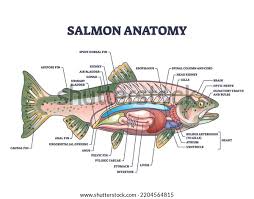Water serves as the environment in which fish carry out their normal activities throughout their lifetime. It is the habitat where fish survive. Water exists in different types, and this determines the species of fish that can be found in it.
Similarly, fish migrate from one water body to another, especially during certain periods of the season or stages in their lifetime. This movement is characterized by specific requirements related to the salt content of the water body needed at a particular time.
This migration can involve movement from freshwater to saltwater or vice versa. While taxonomy is the science of classification, the migratory patterns of fish and the nature of the water in which they are found are used for grouping purposes.
For the purpose of this article, species classification into their respective families will be highlighted.
Grouping of Fish Based on Habitat
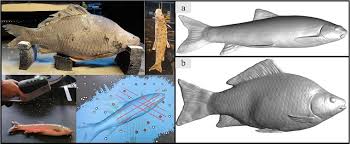
The habitats in which fish are found vary and include marine, brackish, and freshwater environments. The salt content of these water bodies distinguishes one from the other. Salinity, expressed in parts per thousand (ppt), is a key factor.
A water body with salinity greater than or equal to 35 ppt is considered marine water, while brackish water has salinity ranging from 1–34 ppt. Any water body with salinity less than 1 ppt is classified as a freshwater habitat, such as lakes, rivers, streams, and springs.
Fish species have diverse water quality requirements, either at certain stages of their life or throughout their lifetime, for specific activities. As a result, they may migrate through different water bodies with significantly varying salt content. Based on this migration pattern, fish can be classified as anadromous, catadromous, or diadromous.
1. Anadromous Fish: These fish migrate from saltwater bodies, such as brackish water, into freshwater bodies. An example is the Salmon.
2. Catadromous Fish: These fish migrate from freshwater bodies into saltwater bodies. An example is the Eel.
3. Diadromous Fish: Diadromous fish spend their lives in both freshwater and saltwater bodies simultaneously, without any barrier related to the season or metabolic activity. An example is Chrysichthys nigrodigitatus.
Read Also: Goat Milk Production Complete Guide
Classification of Fish: A Hierarchical Approach
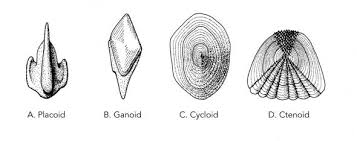
Similar to the classification of plants or other higher animals, fish classification follows a hierarchical pattern, starting from Phylum to Species:
Phylum → Sub-phylum → Superclass → Class → Subclass → Order → Sub-order → Family → Genus → Species
A species of fish comprises a group of fish whose members share similarities in structure or appearance and are capable of breeding among themselves. The species level is the most specific and forms the basis for taxonomic grouping, making it crucial for various purposes, including research. Stream size plays a critical role in the distribution of freshwater fishes.
Some species have specific habitats, such as headwater streams with significant groundwater influences, while others are less particular, inhabiting a wide array of stream sizes across extensive geographic ranges. When identifying a fish within a genus (a group of fish with similar structure or appearance), the species name is indicated, as it distinguishes one from another.
Therefore, correct classification to the species level is essential, as not all members of the same genus possess the relevant characteristics for culture purposes.
Fish Species of Nigeria
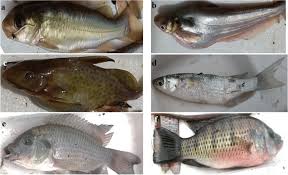
Among the finfish families and species recognized in Nigerian waters, certain families are of commercial importance and are widely cultured across the country and in some parts of Africa. Some of the known families are highlighted below, with emphasis on a few species in each family.
1. Family Clariidae (Catfish)
This family belongs to the catfish group and is generally scaleless. They have strong heads, well-developed mouths, and barbels. They are commonly found in swamps, streams, rivers, and lakes. Breeding migration occurs in schools during the onset of the rainy season, as they move from deep swampy areas or lakes to flowing shallow streams to spawn.
The Clariidae family is divided into two genera: Clarias and Heterobranchus. They have broad, flattened heads that are rough and granular, with wide mouths. They possess strong spines in front of each pectoral fin and a structure near the gills that aids in breathing outside water for some time.
The main distinguishing feature between Clarias and Heterobranchus is that Clarias has a rayed dorsal fin that extends the entire body length, while Heterobranchus has a rayed dorsal fin followed by a large adipose fin.
i. Genus Clarias: These species are so similar that distinguishing between them is challenging. They are widely distributed across West Africa, with Clarias gariepinus being the most widely cultured fish species in Nigeria for commercial purposes.
Other species include Clarias anguillaris, C. jaensis, C. macromystax, C. albopunctatus, C. camerunensis, C. agboyiensis, C. dahomgensis, and C. pachynema. The head length is about 30.8% of the standard length, with a long and narrow front fontanel.
The distance between the extremes of the dorsal fin and the origin of the caudal fin is 0.0–7.6% of the standard length. Vomerine teeth are present and are mostly pointed or granular. C. gariepinus is an omnivorous bottom feeder, consuming plankton, detritus, insect larvae, and small fish such as Tilapia and Alestes.
ii. Genus Heterobranchus: There are three species of Heterobranchus widely distributed in West Africa: Heterobranchus bidorsalis, H. longifilis, and H. isopterus. H. bidorsalis and H. longifilis are the most commercially important species in Nigeria. Growth is rapid, with some reaching up to 1.5 meters in length and weighing 30 kg. The head is well-depressed and coarsely granulated compared to Clarias.
Vomerine teeth account for 20.8–25.5% of the head length, and the premaxillary teeth account for 25.2–30.9% of the head length. The dorsal fin consists of a rayed fin and an adipose fin without spots. They are omnivores, feeding on seeds, fruits, plant materials, gastropods, crustaceans, Chrysichthys spp., Tilapia spp., and Brycinus spp.
Reasons for the Wide Culturing of Clarias:
i. It is generally acceptable in the market.
ii. It can breed in captivity.
iii. Clarias are omnivores and can be fed with a variety of food materials.
iv. It has a sweet flavor and is highly palatable.
v. It can withstand stress better than other types of fish.
2. Family Bagridae
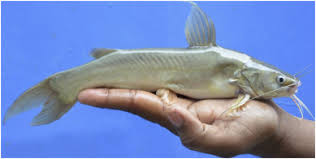
This family includes five genera: Bagrus, Chrysichthys, Clarotes, Auchenoglanis, and Parauchenoglanis. The most common species in Nigeria are Bagrus domac niger, Chrysichthys nigrodigitatus, Chrysichthys auratus, Chrysichthys furcatus, Clarotes laticeps, Clarotes macrocephalus, and Bagrus bayad.
Members of the Bagridae family are also scaleless but moderately elongated. They have two dorsal fins: the first is rayed, and the second is an adipose fin, which is large in genera Bagrus and Auchenoglanis but small in Chrysichthys and Clarotes. They possess two pairs of maxillary barbels, one pair of mandibular barbels, and one pair of nasal barbels.
i. Genus Bagrus: This genus has a moderately elongated body and is bluish-grey. It has four pairs of barbels, and common species include B. bayad, B. docmac, and B. filamentosus.
ii. Genus Chrysichthys: Common species in this genus include Chrysichthys nigrodigitatus, C. walkeri, C. auratus, C. furcatus, and C. aluuensis. They are referred to as silver catfish and have protruding, oval-shaped, bulbous eyes. The first large dorsal fin has 5–6 rays preceded by 1–2 spines.
iii. Genus Clarotes: This genus mainly includes Clarotes laticeps and Clarotes macrocephalus. They are bottom dwellers in water bodies such as swamps, rivers, and lakes. The head of C. laticeps is relatively small, with visible cranium ornamentation, which is less visible in C. macrocephalus. C. laticeps can weigh up to 8–10 kg at 70 cm in length, while C. macrocephalus of 10 kg would be about 100 cm. They are piscivorous, preying on prawns, Tilapia, Alestes, Clupeids, and Synodontis.
3. Family Ariidae (Marine Catfish)
The common species in this family are Arius latiscutatus, A. gigas, and A. heudeloti. They are commonly referred to as marine catfish, primarily found in marine waters. Apart from A. gigas, which is the only pure freshwater species, the others inhabit estuaries, river mouths, and lagoons. Members of the Ariidae family live solitary lives and are piscivorous, with an inferior mouth type that preys on small fish species and prawns. They have an adipose fin and can weigh up to 50 kg.
4. Family Mochokidae
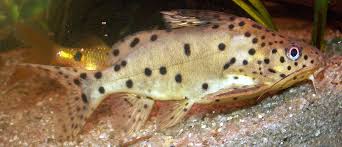
This family consists of five genera: Mochocus, Brachysynodontis, Hemisynodontis, Synodontis, and Chiloglanis, accounting for over twenty species. They are characterized by short, stumpy bodies and a bony (cephalonuchal) head shield.
Both the dorsal and anal fins have serrated spines that can be locked in an extended position, aiding in self-defense and making them difficult to handle with bare hands.
They have a large adipose fin extending from the end of the first dorsal fin to the caudal fin. They are referred to as upside-down catfish. Common species include Synodontis clarias, S. resupinatus, S. budgetti, S. batensoda, S. sorex, S. vermiculatus, S. ocellifer, S. omias, S. gambiensis, S. eupterus, S. gobroni, Mochocus niloticus, Hemisynodontis membranaceous, Chiloglanis niloticus, and C. batessi.
They have an inferior mouth type with barbels and feed mostly on insect larvae, detritus, algae, and small invertebrates attached to rocks or underwater surfaces.
Read Also: Worm Infestation on Ruminant Animals: Symptoms and Treatment
5. Family Cichlidae (Tilapia)
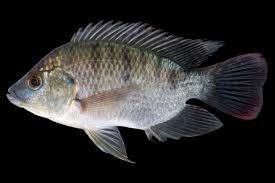
Tilapia are mostly regarded as herbivores but have been found to feed on small invertebrates and small fish, making them omnivores. They have large cycloid scales and laterally compressed bodies.
They possess two lateral lines: the upper one runs from the head to the base or end of the dorsal fin, and the second runs below from the end of the dorsal fin to the caudal fin. The dorsal fin consists of a spiny first half and soft-branched rays in the second half without a break.
Tilapia are characterized by high fecundity and are known for guarding their young. A black spot on Tilapia is more pronounced in juveniles but becomes less conspicuous in adults. Tilapia have up to six genera: Chromidotilapia, Hemichromis, Oreochromis, Tilapia, Sarotherodon, and Tylochromis. They are usually found moving in schools (gregarious).
Reasons for Culturing Tilapia:
i. They grow well on low-protein food substances.
ii. They breed with high fecundity.
iii. They tolerate a wide range of environmental conditions.
iv. The flesh of Tilapia is sweet and highly palatable.
v. They efficiently convert agricultural wastes into feed.
vi Tilapia can be stocked intensively under various culture systems.
Common species include Tilapia zillii, T. rendalli, Oreochromis niloticus, O. mossambicus, O. aureus, Sarotherodon galilaeus, S. melanotheron, Hemichromis fasciatus, and H. bimaculatus.
Shellfish Species Of Nigeria
The shellfish resources in Nigerian waters include marine shrimps, crabs, lobsters, oysters, and more. These shellfish are valuable sources of protein in human diets and contribute significantly to Nigeria’s economy through foreign exchange.
Artisanal and industrial fishing activities are crucial in coastal and marine waters. The artisanal sector includes small sub-sectors such as lagoon, estuarine, and inshore canoe fisheries, characterized by low capital outlay and remaining the main source of fish production in Nigeria.
The industrial sector involves high capital outlay, advanced technology, vessels, and cold storage facilities.
1. Shrimps And Prawns
Shrimps and prawns are often used interchangeably, but in aquaculture studies, prawns refer to freshwater forms of Palaemonids, while shrimps refer to marine species.
Shrimps and prawns have become high-value commodities in many developing countries, including Nigeria, due to their export market potential. Species of prawn (Palaemonidae) include Palaemonetes monodon, P. indicus, and P. orientalis, while the family Penaeidae includes species such as Penaeus orientalis, P. monodon, P. japonicus, and P. setiferus.
Fresh food remains important in larval and fry rearing, as well as adult grow-out, although commercial feeds are becoming available.
2. Crayfishes And Crabs
Crayfishes, lobsters, and crabs are in high demand globally, but crayfishes account for the most significant production through culture. Small-scale crab production has also been exported from tropical countries, including Nigeria.
Crayfishes belong to the families Cambaridae and Astacidae and are widely distributed across all continents, including Africa. Important species include Procambarus clarkii, Pacifastacus leniusculus, and P. acutus.
Crayfish are omnivorous, feeding on detritus, vascular plants, epiphytes, and animal matter such as worms, insect larvae, mollusks, and zooplankton.
Crabs belong to the family Brachyura, with the pre-moult blue crab (Callinectes sapidus) being commercially important in the U.S.A. Japan leads in commercial crab production, with species like Neptunus pelagicus and Portunus trituberculatus.
Nigeria has three groups of marine crabs: estuarine species (Gecarcinidae and Grapsidae), swimming species in inshore waters (Portunidae), and deep-sea crabs (Geryonidae).
3. Oysters
Cultivated oysters belong to two genera: Crassostrea (cupped oysters) and Ostrea (flat oysters). Cupped oysters are more widely cultivated, but flat oysters are highly valued and command higher prices.
Important species include Crassostrea gigas (Pacific oyster), C. virginica (American oyster), C. angulata (Portuguese oyster), C. commercialis (Sydney rock oyster), C. glomerata (Auckland rock oyster), C. plicatula (Chinese oyster), C. rivularis (Chinese oyster), Ostrea edulis (European oyster), O. chilensis (Chilean oyster), and Crassostrea gasar (Mangrove oyster).
Although not yet at commercial production stage, Crassostrea gasar is abundant in Nigeria’s mangrove waters and is exploited subsistently. Other bivalves exploited in Nigeria include ark clams (Senilla senilis, Anadara senegalensis, and Cardium costratum).
Classification Of Some Exotic/Foreign Fin Fish Species
1. Order Acipenseriformes (Sturgeons and Paddlefishes): Includes sturgeons (Acipenseridae) and paddlefishes (Polyodontidae). They are large freshwater fishes with cartilaginous skeletons and heterocercal caudal fins.
2. Order Lepisosteiformes (Gars): Includes long, slender, predatory fishes with ganoid scales. They inhabit quiet, weedy backwaters and have elongated jaws with needle-like teeth.
3. Order Cypriniformes (Minnows, Carps, and Suckers): Includes species like goldfish, minnows, and loaches. They lack teeth in their mouths.
4. Order Siluriformes (North American Catfishes): Includes catfishes with four pairs of barbels and an adipose fin.
5. Order Esociformes (Pikes and Pickerels): Includes elongated freshwater fishes with dorsal and anal fins located far back on the body.
6. Order Salmoniformes (Trout and Salmon): Includes freshwater, marine, and anadromous species with soft-rayed fins and adipose fins.
7. Order Scorpaeniformes (Sculpins): Includes spiny or bony-plated fishes with rounded pectoral fins.
8. Order Perciformes (Temperate Basses, Sunfish, Perches, and Drums): The largest order of fish, including both marine and freshwater species.
This article provides a comprehensive overview of the morphology, classification, and commercially important fish and shellfish species in Nigeria, highlighting their ecological and economic significance.
Do you have any questions, suggestions, or contributions? If so, please feel free to use the comment box below to share your thoughts. We also encourage you to kindly share this information with others who might benefit from it. Since we can’t reach everyone at once, we truly appreciate your help in spreading the word. Thank you so much for your support and for sharing!

